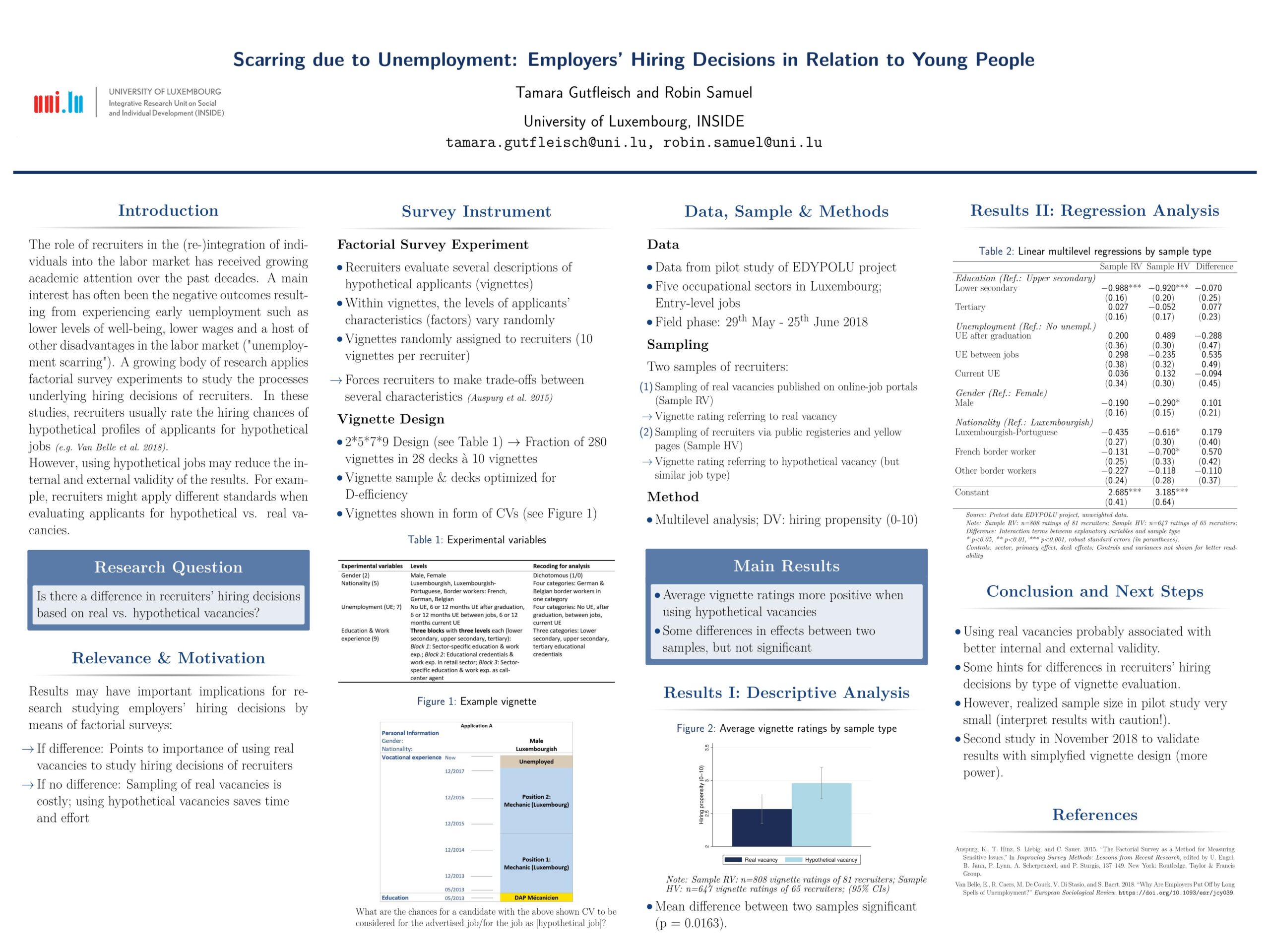The long-term consequences of experiencing early unemployment for future labor market outcomes and individual well-being have been widely documented in the literature. As youth unemployment remains one of the main challenges of our time, it is important to understand the mechanisms on both sides of the job matching process. However, the majority of previous research only highlights issues on the supply side of this process by analyzing observational or administrative data. Empirical evidence on the demand side of youth unemployment is still scarce. Against this background, we examine how employers evaluate hiring chances of young job applicants with special emphasis on scarring due to unemployment. Specifically, we aim at addressing the shortcomings of previous research in two ways: (1) We conduct a large-scale factorial survey experiment among recruiters in five occupational sectors in Luxembourg. Recruiters evaluate several hypothetical descriptions of applicants which randomly vary in their combination of attributes. (2) We test whether using hypothetical vs. real vacancies affects employers’ evaluation of applicants – a question that has received little attention so far despite the potential implications for research studying employers’ hiring decisions by means of factorial surveys. Preliminary findings from our pilot study show some hints for differences in recruiters’ hiring decisions when confronted with real vs. hypothetical hiring problems. With our approach, we contribute to the literature on youth employment as well as to the methodological research on factorial surveys.


